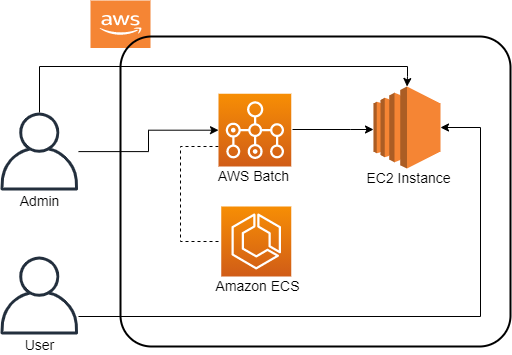Think about the apps you use every day—Spotify, Netflix, Dropbox, Google Docs. What do they all have in common? They’re powered by the cloud.
In the world of tech, cloud-based App development has shifted from being a trend to becoming the standard. Businesses of all sizes—from startups to Fortune 500s—are now turning to the cloud to build scalable, cost-efficient, and agile applications.
So what exactly is cloud-based app development? How does it work? And why is it considered the future of modern software?
In this post, we’ll break it down in a human-friendly way. No fluff, just real talk about the cloud-based application development process—and why you should care.
What Is Cloud-Based Application Development?
Cloud-based app development is the process of designing, building, testing, and deploying applications entirely within cloud environments. That means the infrastructure (servers, storage, databases, etc.) used to build and run the app lives online—no physical hardware needed on your end.
Instead of building apps the traditional way (on local servers or data centers), developers now leverage cloud platforms like AWS, Microsoft Azure, and Google Cloud to streamline everything—from writing code to going live.
The Cloud-Based Development Process: Step-by-Step
let’s walk through how a typical cloud-based application development process looks in real life.
🧠 Step 1: Ideation & Planning
As with any project, it starts with an idea. You define your goals, target audience, must-have features, and user journey.
During this stage, you’ll also decide:
- Which cloud platform to use (AWS, Azure, GCP, etc.)
- Which architecture model fits (serverless, containers, microservices)
- What tech stack makes sense (JavaScript, Python, Node.js, etc.)
Pro tip: Choose a cloud-native approach from the beginning to fully leverage scalability and performance.
💻 Step 2: Design & Prototyping
UI/UX designers build wireframes and interactive mockups using tools like Figma or Adobe XD. This phase focuses on user experience and functionality.
Once the design is approved, developers create the minimum viable product (MVP)—a stripped-down version of your app to test core functions.
Cloud platforms often provide built-in prototyping tools or integrations to support this phase.
⚙️ Step 3: Development in the Cloud
Here’s where the real coding begins.
Developers write code and build app components directly in the cloud using tools like:
- AWS Cloud9 (cloud IDE)
- Visual Studio Code with GitHub Actions
- Google Cloud Code
They may also use microservices or containerization (via Docker) to build independent modules that can be updated or scaled separately.
Cloud-native apps are often developed using modern frameworks like React, Angular, or Flask, then deployed using services like Kubernetes or serverless platforms (like AWS Lambda).
🔁 Step 4: Testing & Continuous Integration
Testing in the cloud is fast and efficient. Automated test suites can run on scalable servers without slowing down development.
With CI/CD (Continuous Integration/Continuous Deployment) tools like Jenkins, GitHub Actions, or GitLab CI, code is automatically tested and pushed to staging or production environments.
Benefits:
- Faster release cycles
- Reduced bugs
- Seamless rollbacks if something goes wrong
🚀 Step 5: Deployment & Scaling
Once your app is tested and ready, it’s time to go live.
You deploy it using cloud services like:
- AWS Elastic Beanstalk
- Google App Engine
- Azure App Services
These services handle the infrastructure, load balancing, and scaling for you. Your app stays available, responsive, and secure—without you needing to babysit a single server.
📈 Step 6: Monitoring, Analytics & Optimization
After launch, the work isn’t over.
Cloud platforms provide real-time monitoring and logging tools (like CloudWatch, Azure Monitor, or Google Operations) to track user behavior, app performance, and infrastructure health.
You can optimize resource usage, fix bottlenecks, and plan new features—all backed by real data.
Popular Use Cases for Cloud-Based App Development
Cloud-based apps aren’t just for tech giants. They power all kinds of industries and ideas:
- E-commerce apps that scale with seasonal traffic
- Healthcare platforms that need secure, compliant storage
- EdTech solutions that support remote learning worldwide
- Finance apps with real-time data processing
- Social networks and chat apps with global reach
Whatever your niche, the cloud development process can bring your vision to life quickly and efficiently.
Is Cloud-Based Development Right for You?
If you’re building an app in 2025, there’s really no question—cloud-based development is the way forward.
It offers unbeatable speed, scalability, and cost-efficiency. It allows small teams to build powerful products. It empowers large enterprises to innovate faster. And it future-proofs your app in a constantly evolving digital world.
So whether you’re launching a side project or architecting a full-scale enterprise solution, take advantage of what the cloud has to offer.
With the right strategy and tools, you can bring your app idea to life—faster, smarter, and stronger than ever before.



nice
Good https://shorturl.at/2breu
Awesome https://shorturl.at/2breu
Awesome https://lc.cx/xjXBQT
Very good
Awesome https://lc.cx/xjXBQT
Good https://lc.cx/xjXBQT
Good https://t.ly/tndaA
Nive i have read complete blog
Very good
Good
Awesome
Good https://t.ly/tndaA
Good https://urlr.me/zH3wE5
Good https://rb.gy/4gq2o4
Good
Very good https://rb.gy/4gq2o4
Awesome
Good
Awesome
Very good
Awesome https://is.gd/N1ikS2
Awesome
Good
Awesome
Very good
Good
Very good
Good
Awesome nice information
Good https://is.gd/N1ikS2
Good
Good
Very good
Very good
Very good
Very good nice information
Very good
Awesome blog in cloud
Cool partnership https://shorturl.fm/XIZGD
Very good https://shorturl.fm/TbTre
https://shorturl.fm/FIJkD
Pingback: viagra pfizer 50 mg
nice information
В интернете часто встречается база для хрумера бесплатно https://www.olx.ua/d/uk/obyavlenie/progon-hrumerom-dr-50-po-ahrefs-uvelichu-reyting-domena-IDXnHrG.html, но ее качество может оставлять желать лучшего.
Получить психологическую помощь Записаться на онлайн
консультацию к психологу 885
gojgmrmhzgiiksilsvvmsxslugvvju